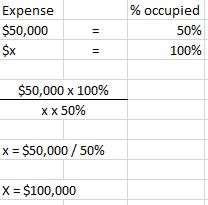The physical embodiment of the last real estate recession is now gone … and it is kind of sad.
May 13, 2018

(A little non-lease administration but still real estate related blog for this week)
Having been in retail real estate since 1987, I have seen my shares of ups and downs. However, in the early through mid 2000s, transaction volumes were through the roof, and I had forgotten the rule about what goes up also goes down. But, late 2007 to late 2009 was as rough as I had ever experienced. Having lived as if the party of the early 2000s would continue forever, it was time to batten down the hatches.
Quickly becoming a Dave Ramsey fan, the Lexus and BMW gave way to a fairly nice used Hyundai Veracruz for my wife, and, a 1998 Jeep Cherokee for me (which my family somewhat affectionately (not really!) referred to as “the steaming metal box”). Steaming because the A/C worked intermittently, then not at all. Metal box because it started as mostly slate blue with a slight Cherokee acidy paint fade to a most acidy paint fade with some remaining vestiges of blue.
It is a humbling but powerful learning experience to move from a BMW to a used Jeep with 160k miles on it at purchase. In an area where teenagers drive cars as nice (or nicer) than the parents, it was almost a forced sociological experiment. You no longer even got the steering wheel hand wave in the neighborhood.
By the time the industry started to recover in 2010, I had embraced that Jeep and wasn’t about to give it up. I became a fan of not worrying about a new scratch. It was actually liberating. In 2014, I finally caved and bought a new car. But, that physical embodiment of the recession – that steaming metal box – had become a family member. It was not going anywhere.
My son absolutely loved that car and proudly drove it to a high school with a fair share of Mercedes, and BMWs, and Maseratis and Range Rovers. Ultimately, likely as a joke, his cross country team voted his car as favorite vehicle during their goofy year end awards. He loved the designation.
At the start of his sophomore year of college last fall, we drove the Jeep the 700+ miles from Atlanta to South Bend. Well, not all of the way. It decided it need some work in Indianapolis, so made it about a week later. And, it served him well, starting without a hitch after sitting for over a month during winter break on many sub zero days.
But, it came to its final resting place on the drive home yesterday in Austin, Indiana, just 70 miles shy of 240,000 miles, as the transmission gave way and we, fortunately, were able to glide about ¾ of a mile off of I-65 around corners and even up a slight hill into a parking space in a Fuel Mart gas station.
With great fondness, I say goodbye to that symbol of the Great Recession. I will never forget the lessons learned. The next time you see an old Cherokee on the road, use it to remind yourself that commercial real estate is cyclical, and that you need to plan for both good and bad times.





